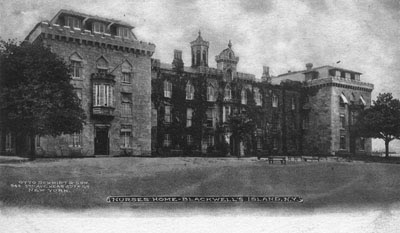 |
| Ian Fleming (1908-1964), author of the Bond novels |
Who was the real James Bond?
Was it someone Bond author Ian Fleming met during WWII?
Or perhaps a better version of Fleming, the chain-smoking,
oversexed and underachieving spy turned author who suffered severe depression
because his visions for himself never matched reality.
While the answer is surely some of each, one
double agent whom Fleming shadowed one night during the war was a strong inspiration.
In rare
documentary footage viewed by Hidden New York, Fleming said his first
book Casino Royale was based on his experiences at the Casino Estoril and the
spies he met there.
 |
| Dusko Popov (1912-1981), double agent during WWII |
During World War II, neutral Portugal became a weigh station
for espionage activity.
Enter Dusko
Popov (1912-1981), a Nazi spy turned by the Allies to work for the
British.
In August of 1941, the day
before Popov was due to depart for Manhattan on what the Nazi’s believed to be
an intelligence gathering mission, Popov was
shadowed at the Casino Estoril by none other than Ian Fleming.
The British were keeping tabs on Popov to see
where his loyalty really lied, but Popov instantly picked up on the fact he was
being shadowed by the clumsy Fleming.
According to his autobiography
Spy/Counterspy,
An incident broke out at the Baccarat table. Popov became irritated by an arrogant player who placed
enormous bets knowing others could not match him.
Popov trumped him with a $50,000 bet to the
dismay of all around, including Fleming who was watching from a
distance. According to Popov, Fleming turned the “green of bile” before flashing a sly smile to Popov
when the player backed down.
This
incident was memorialized in Fleming’s first book
Casino Royale (1953).
 |
| Casino Royale (1953), the first Bond novel |
The next day Popov headed for Manhattan. His assignment was to
gather all information he could about the American outpost of Pearl Harbor and
report it back to the Nazis. Arriving in
New York, Popov dropped his bags off at the Waldorf-Astoria Hotel before
heading to a meeting with the FBI warning them of the impending attack and
providing them a questionnaire on Pearl Harbor supplied by his Nazi handlers. The FBI, however, brushed off Popov as an
untrustworthy playboy who they felt was still secretly working for the Nazis. Popov claims in his book to have had a
confrontational meeting with FBI director J. Edgar Hoover prior to the attack
on Pearl Harbor. While Popov’s claims
are shocking and have been denied by the FBI, there are many indications they
are true. Powerful people in British
intelligence have backed Popov’s claims, including Sir John Masterman, the
chair of Britain’s Double Agent Committee who recruited Popov. Popov was even awarded the prestigious Order
of the British (OBE) award for his service.
And the FBI has every reason to dispute Popov’s claims to avoid the
blame for not heeding his warning on Pearl Harbor.
Brushed aside by the FBI and unable to return to Europe
because the Nazi’s believed he was on a fact-finding mission for them, Popov
was effectively marooned in Manhattan for nearly a year. In the Big Apple, Popov did what he did best –
enjoy life and live a playboy lifestyle.
True to the Bond form, Popov dressed in expensive clothes, rented
a lavish apartment with a wrap-around terrace at 61st and Park, went gambling, smoked and drank heavily, took beach trips to Miami and ski trips to
Part City, Utah, and, of course, loved women.
His nights passed in a “blur of sex and alcohol.”
 |
| Daniel Craig (1968-), current Bond actor |
He had numerous female companions, including most
significantly Hollywood actress Simone Simon, whom he escorted to the finest
restaurants and nightclubs in New York City.
“[Simone and I] became regular fixtures in the fashionable restaurants,”
Popov writes, “an item of inventory in [Manhattan nightclubs] El Moracco and
the Stork Club.” But Popov, codenamed “Tricycle” by the British, was also
serious about his work and put his life on the line many times for the Allies.
Had his Nazi handlers known he was working
for the Allies, Popov would have faced most certain death.
In 1972, John Masterman, former chair of the British XX
Committee that ran Popov published a history of the cloak and dagger committee that
included a copy of the entire Pearl Harbor questionnaire that agent “Tricycle”
had passed to the FBI with a stern conclusion that it represented a “somber but
unregarded warning of the subsequent attack upon Pearl Harbor.” Popov wrote his memoirs Spy/Counterspy just two years after the Masterman book, believing
Masterman had opened the door to discussing his clandestine operations and
discussing his meeting with Hoover and warning about Pearl Harbor. Clarence Kelly, Hoover’s successor as FBI
director, denied that Popov and Hoover had ever met and insisted that the FBI
never had information that Japan would attack Pearl Harbor. Popov set off on a book endorsement tour in
which he was hailed as the real James Bond and glamourized by the media for his
attractive wife over thirty years his junior.
When he died on August 10, 1981, forty years to the day when the then
29-year old spy left for New York City to warn the FBI about Pearl
Harbor, his widow said “He lived how he wanted to live.” Negatively viewed by many as a mere playboy,
Popov once responded, “When you love life, good wine, good company, and can
still do good serious work, it is not being a playboy it is living life to the
full.”














